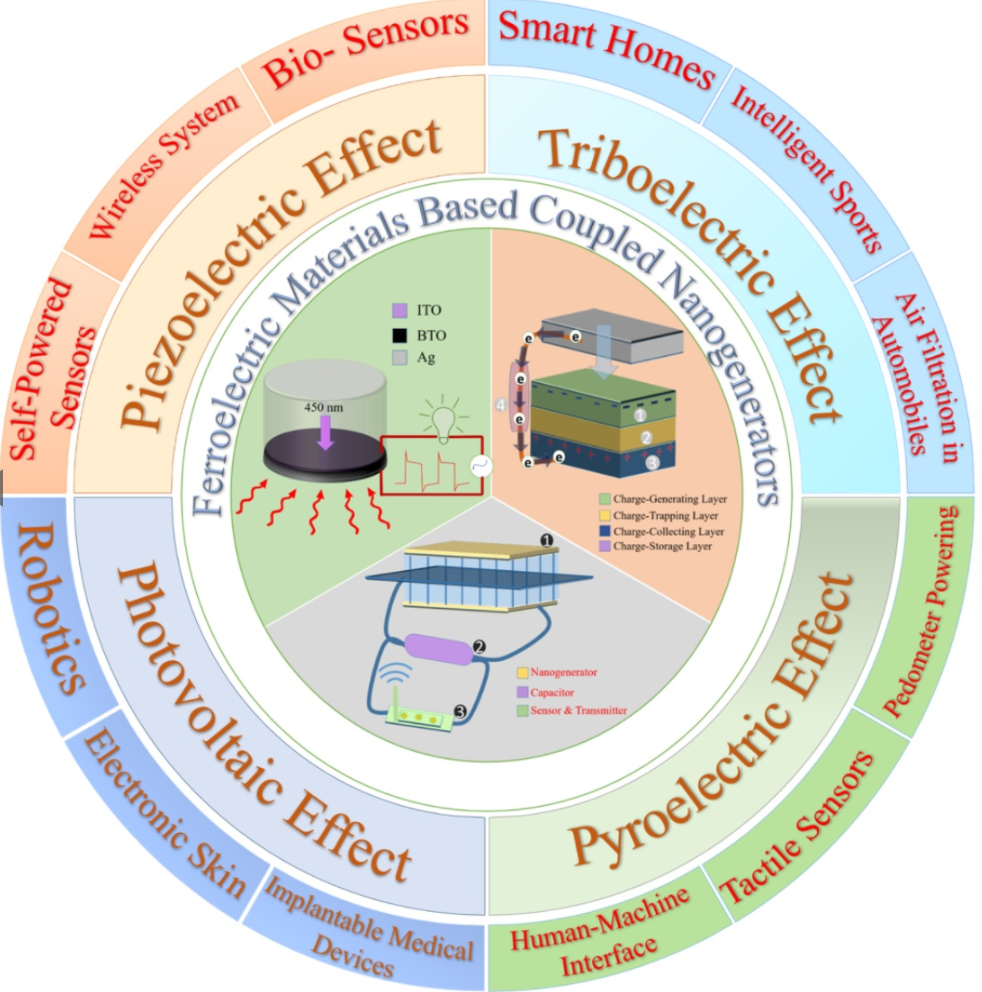A recent study published in the journal Nanoenergy Advances discusses ferroelectric material-based nanogenerators that demonstrate ferroelectric photovoltaic effects. The report also explores the advantages of utilizing these materials, as well as possible future applications.

Study: Ferroelectric Materials Based Coupled Nanogenerators. Image Credit: Anucha Cheechang/Shutterstock.com
An Introduction to Nanogenerators and Ferroelectric Materials
As mobile devices and cellular communication channels have advanced, researchers have become increasingly concerned with device shrinking and multi-functionality, such as reduced power requirement, flexibility, and so on.
The usage of typical chemical batteries for small-scale uses is wasteful and harmful to the environment; therefore, pocket-sized renewable energy sources are necessary. This calls for the development of energy harvesting systems, which can effectively collect energy, in the form of heat, light, mechanical or electrical energy and reuse power sources from the ambient environment.
The fundamental principle of nanogenerators was founded on the idea of using the Maxwell displacement current as the impetus to transform energy from ambient sources into usable electric power signals.
Ferroelectrics are useful dielectric materials that exhibit extraordinary spontaneous polarizing capabilities even in the absence of electric fields. They have provided a diverse set of applications that contribute to bandwidth filters, temperature and pressure sensors, actuation devices, hydrophones, and several other devices.
These materials also demonstrate pyroelectric, piezoelectric, and photovoltaic ferroelectric effects caused by reactions to environmental stimuli, including thermal, mechanical, and solar energy. Such characteristics encourage the use of ferroelectrics in the development of nanogenerators.
Ferroelectrics have lasting dipole moments when in the presence of an electric field, increasing their polarizing density and allowing them to be used in worn, flexible electronic devices. As traditional semiconductors lack this characteristic, ferroelectric materials are gaining popularity.
Inorganic ferroelectric ceramic and organic ferroelectric polymeric materials are the most active ferroelectrics incorporated in nanogenerator applications. Ferroelectric ceramics are complex, are often compounded with other ferroelectric/non-ferroelectric materials, and are stacked to multilayered architecture to optimize their output characteristics with different structural makeups.

Image Credit: Minhas, J., Hasan, M., & Yang, Y
Ferroelectric Photovoltaic Effect
The study details that the photovoltaic phenomena exhibited in ferroelectric materials are quite different from typical photovoltaic effects (PVE) exhibited by traditional semiconducting pn-junctions. The in-built current field separates the produced photo-carriers across the depletion zone of the pn-junction, establishing that open-circuit energy for certain photovoltaic phenomena in semiconductors is limited by a bandgap.
On the other hand, the in-built electric field for the photovoltaic effect in ferroelectrics is caused by residual polarity (PR) and extends all through the ferroelectric substance, without any bandgap constraint for charge transport.
As a result, the photo potential produced in ferroelectric materials is substantially larger than the respective band gaps. This is known as the anomalous photovoltaic effect or bulk photovoltaic effect (BPVE). In bulk ferroelectric substances such as BFO, the BPVE has been seen.
Photovoltaic ferroelectrics are highly efficient at capturing energy from the sun. One promising approach is to use ferroelectrics with small bandgaps constructed with nanoscale structural domains, combining traditional and ferroelectric PVEs.
Applications of Ferroelectric Material Based Nanogenerators
Nanogenerator technologies have facilitated the development of numerous progressively modern devices in automated microscale or nanoscale systems.
This includes sensors such as pressure, infrared, and haptic sensors, actuation devices, stretchable and wearable devices for energy harvesting, medical monitoring via cyber-physical interfaces, and electrochemical devices as a power supply for several miniature energy harvesters.
Conclusion
A new age of photovoltaic harvesting has dawned, aided by bandgap optimization engineering carried out by chemical sequencing and structural adjustments in layer material thicknesses or electrode domain junctions.
Nanogenerator technological advancements enable ubiquitous self-powering systems for human usage, environmental observation, energy transformation, adaptive power storage, and cellular networks. The extraction of energy from pervasive ambient energy sources using nanogenerators is the current electronics research forefront.
Ferroelectrics are intriguing for developing nanogenerators because they exhibit impetuous polarization, are reversible when subjected to an external electric current, and respond to environmental stimuli such as light, strain, and heat. Their operating processes and methods of maximizing their performance, such as combining effects in nanogenerators, are very diverse and dependable, encouraging solutions to the energy crisis.
Continue reading: Stabilizing the Piezoresponse for Ferroelectric Domain Characterization.
Further Reading
Minhas, J., Hasan, M., & Yang, Y. (2021) Ferroelectric Materials Based Coupled Nanogenerators. Nanoenergy Advances, 1(2), 131-180. Available at: https://www.mdpi.com/2673-706X/1/2/7#
Disclaimer: The views expressed here are those of the author expressed in their private capacity and do not necessarily represent the views of AZoM.com Limited T/A AZoNetwork the owner and operator of this website. This disclaimer forms part of the Terms and conditions of use of this website.